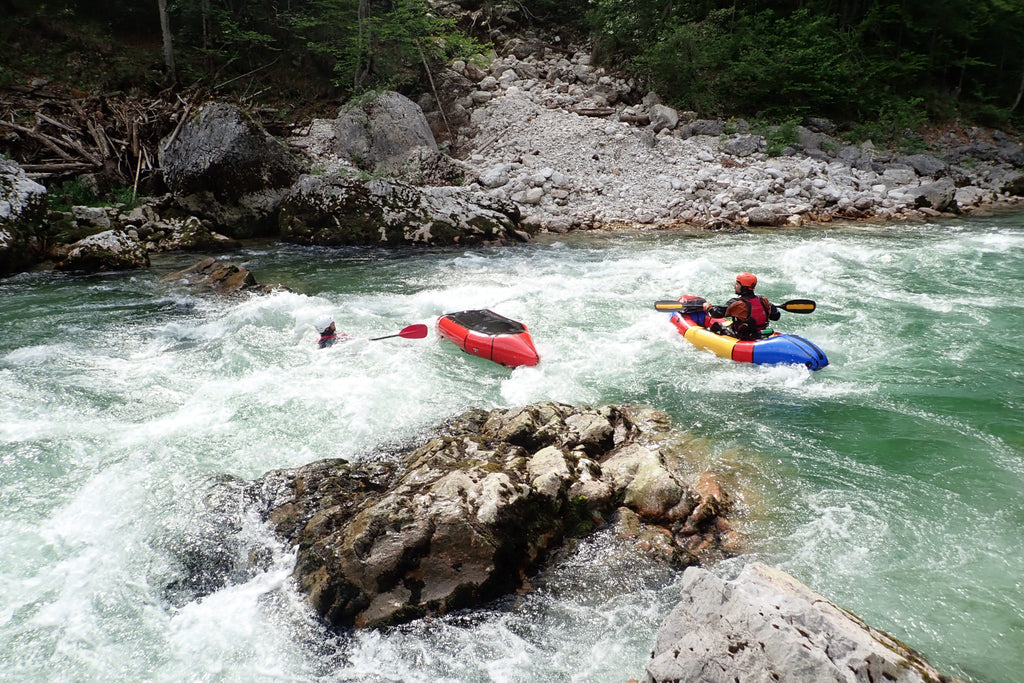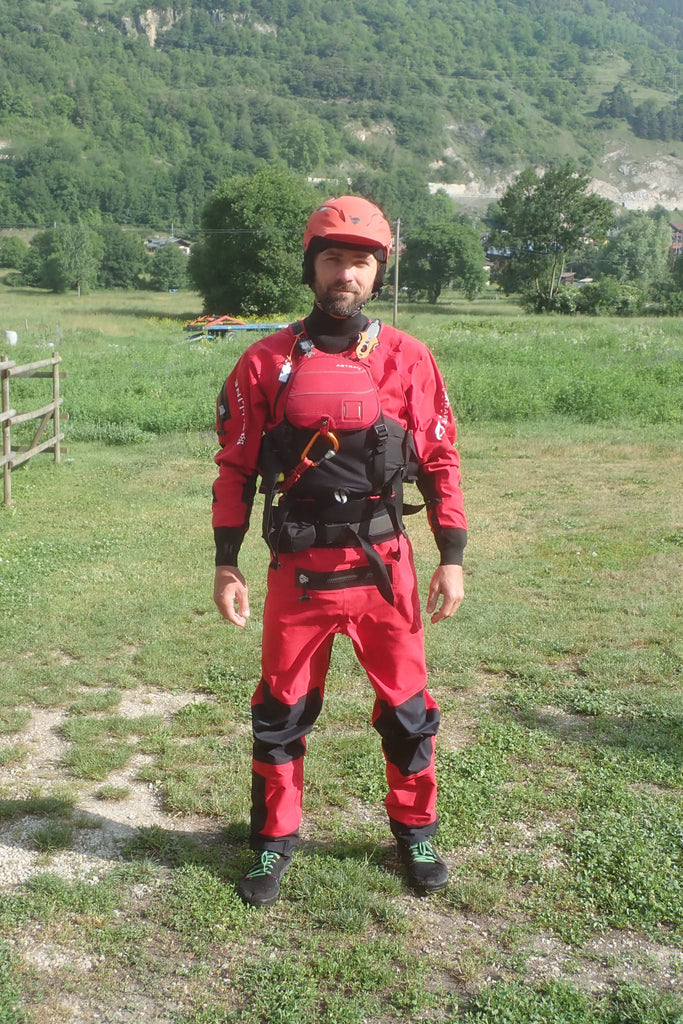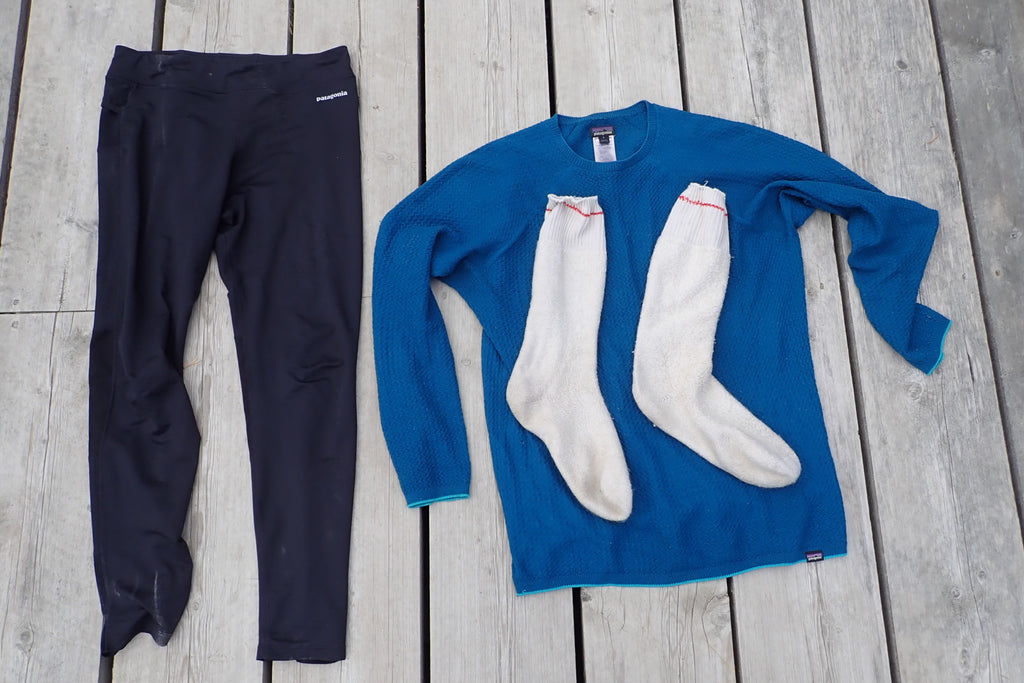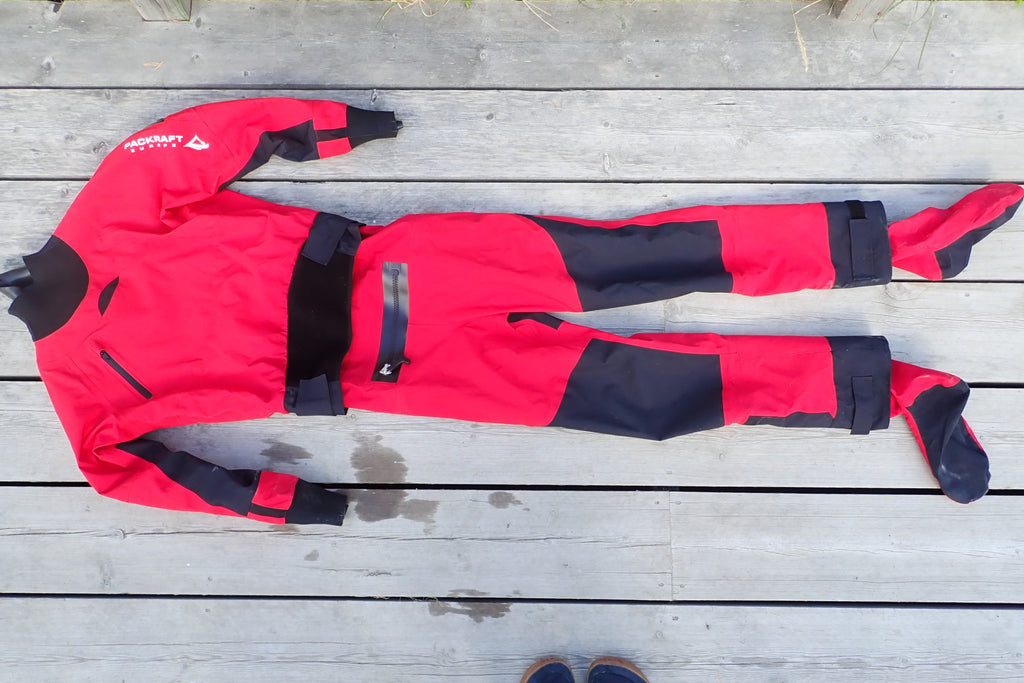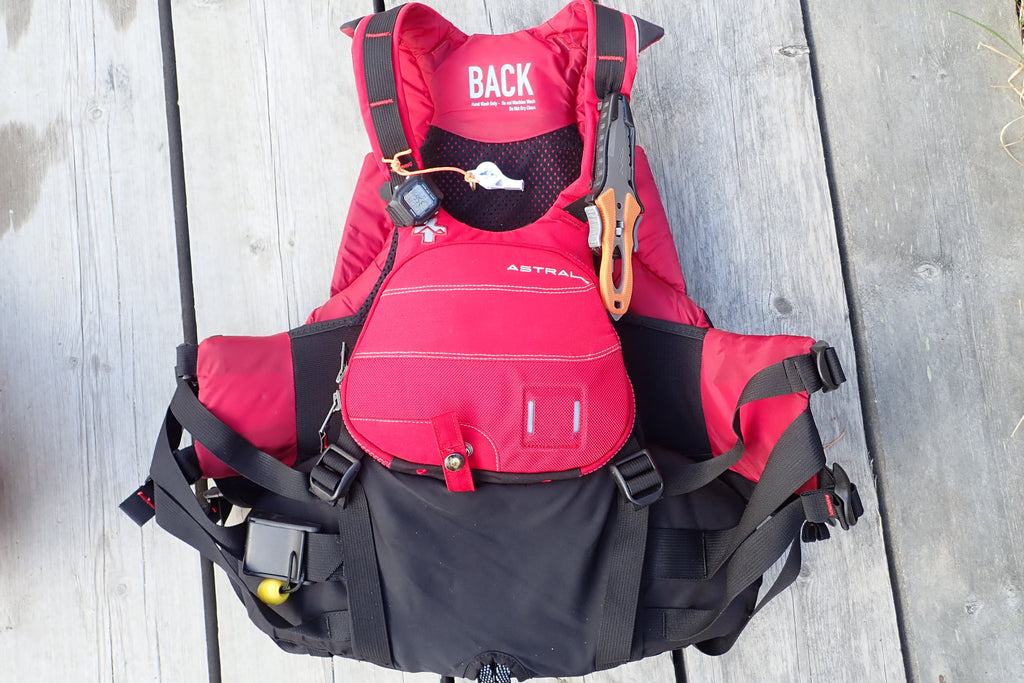
Personal Protective Equipment (PPE) for packrafting in whitewater.
Share
This article is aimed at paddling whitewater class II and above. However, the gear presented below will be of benefit in any whitewater or paddling environment.
You've heard it before, but it is worth mentioning again and again and again.
Packrafting is not backpacking on water!
 Packrafting is a paddle sport and needs to be treated as such.
Packrafting is a paddle sport and needs to be treated as such.
Over the last 30 years and especially during the earlier days as whitewater kayaking and rafting was developing a lot of people died or got seriously injured. Paddling any whitewater is an extreme sport and it needs to be treated as such.
Packrafting is EASY... TOO EASY.
Packrafts are easy to use and give you a false sense of security! People new to packrafting often overestimate the capabilities of their raft and themselves. They lack the basic awareness of the risks involved with moving water. You simply do not know what you do not know.
People have died and more people are going to die packrafting, unfortunately this is a certainty. However, do we need to repeat the same mistakes that were made in the early days of kayaking and rafting?
There is absolutely ZERO need for packrafters to reinvent the wheel. We can copy paste almost everything from the whitewater kayaking and rafting community.
- Gear is great
- Knowledge is better
- Training and experience is best
PPE (Personal Protection Equipment):
Let's start with the fundamentals. You don't go skiing in board shorts and flip flops, you dress appropriately, why should packrafting be any different.
It is not IF, it is when. Swimming is a part of packrafting so best to be prepared for it.
DRESS TO SWIM!
Face it, it is not IF you will swim, it is when.
So best to be prepared. How cold is the river? It might be a warm day with the sun shining but is the river fed by a glacier or snow melt? What if the weather changes?
Proper PPE starts with your clothing choices and moves on to cover everything you carry on your person while on the river. Test all of your gear in a controlled environment first!
Dressed to swim. Proper Personal Protective Equipment from head to toe.
Shoes - Do they provide sufficient grip on wet rocks? Some hiking shoes are great until they get wet, then they turn into ice skates.
Astral Brewer, low profile to reduce risk of entrapment, lightweight, fast draining/ drying and most importantly super grippy on wet rock. With good shoes you can move with confidence in and around the river.
Clothing choice - NO COTTON!!! includes underwear and bras. There are numerous saying's within the outdoor community about cotton. "Cotton is rotton", "Cotton kill's" etc. The reason being is that once cotton is wet it provides less than zero insulation, it actually cools you down and can quickly put you at risk of hypothermia.
No cotton! Thick wool socks, Thermal polypro long johns and woven merino thermal top to add warmth when wearing a drysuit.
Socks - Thick Wool is best.
Thermal Underwear - Merino, Capilene or Polypro.
Insulation layers - Fleece pants, tops, and insulation to keep you warm.
Wetsuit- Pros = Added buoyancy, some impact protection, more comfortable in warmer environments, inexpensive.
- Cons = Heavy & wet.
Drysuit
- Pros = Dry, more comfort, warmer in cold environments if paired with appropriate clothing underneath.
- Cons = Expensive, less durable than wetsuits (if you put a hole in it or break the neck or wrist gaskets it becomes ineffective).
Quality dry suit, Reinforced in the right places, waterproof breathable fabric, sewn water proof socks, latex wrist and neck seals, waterproof zippers.
PFD (Personal Flotation Device) vs Lifejacket. A life jacket is designed to keep you on your back and your head above water if you are unconscious and should be used by someone who can NOT swim. A PFD is a flotation device that provides buoyancy and allows you to have a full range of movement ie. swim & paddle and should only be used by people who can swim. A PFD will not float you on your back or keep your head above water if you are unconscious. 50N (Newtons) is the certified minimum buoyancy for whitewater PFDs in Europe. However, is 50N enough for packrafting in a whitewater environment? We have had a look at what is used in the whitewater kayaking and rafting world and recommend the following as a guide when choosing a whitewater PFD for packrafting. 60N is ok for low flow rivers up to class 2+. 70N or more is recommended for high flow rivers or whitewater class 3 and above. A rescue PFD with a releasable chest harness is recommended for anyone who plans to paddle class 2 and above, and who has taken or plans to take a whitewater rescue course (highly recommended) or anyone who guides or leads groups. An inflatable PFD has NO place in a whitewater environment.
Whitewater PFD = 70N minimum, good fit. Optional: quick release chest harness (rescue PFD) and visible colour. Whistle and Knife both quick and easy to access with one hand.
Helmet - Whitewater Specific for use on Whitewater (CE EN1385).
CE approved helmet for use on whitewater.
Whistle - Pea less so it works when wet, should be easily accessible while paddling with one hand.
Rescue knife - To quickly cut rope, should be easily accessible while paddling with one hand.
What to carry on your person at all times (The 10 Essentials)
- Warm clothes. (Point #1 one of PPE)
- Food & water (extra calories / hydration)
- Knife & Whistle (River Knife verse bushcraft knife / Know how to use it)
- Emergency blanket (Know how to use it)
- Fire starting kit (Know how to use it)
- Maps / Knowledge (Covering the river and emergency access & and exit points)
- Compass with signal mirror (Know how to use it)
- Headlamp (+spare batteries)
- First aid kit (Know how to use it)
- Communications (Cell phone / PLB / Inreach / Spot (Know how to use it)
This is our sport, and it is growing fast! It is up to every single one of us to be leaders within the sport and help it grow in a safe way. We do not need to repeat the mistakes that were made in the early days of whitewater kayaking and rafting. Let's work together and do our best to keep all paddlers safe. Take a whitewater rescue course, practice your skills, packraft with better paddlers, use common sense, and share your knowledge.
Stay tuned in the next part we will cover how to Rig to Flip and Personal Rescue Equipment (PRE).
Safe paddling,
Seon
Did you enjoy reading this post? Sign up for our newsletter at the bottom of the website and receive future packrafting posts (we send max. one email per month)!

